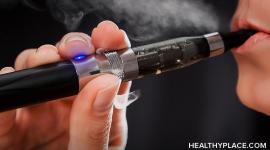Who Self-Injures? Psychological Characteristics Common in Self-Injurers
What kind of person would cut or burn themselves? It turns out there are some common traits amongst self-injurers.
Most self-injures are women and they seem to have some psychological characteristics in common. They are people who:
- strongly dislike/invalidate themselves
- are hypersensitive to rejection
- are chronically angry, usually at themselves tend to suppress their anger have high levels of aggressive feelings, which they disapprove of strongly and often suppress or direct inward
- are more impulsive and more lacking in impulse control tend to act in accordance with their mood of the moment
- tend not to plan for the future
- are depressed and suicidal / self-destructive
- suffer chronic anxiety
- tend toward irritability
- do not see themselves as skilled at coping
- do not have a flexible repertoire of coping skills
- do not think they have much control over how/whether they cope with life
- tend to be avoidant
- do not see themselves as empowered
People who self-injure tend not to be able to regulate their emotions well, and there seems to be a biologically-based impulsivity. They tend to be somewhat aggressive and their mood at the time of the injurious acts is likely to be a greatly intensified version of a longstanding underlying mood, according to Herpertz (1995). Similar findings appear in Simeon et al. (1992); they found that two major emotional states most commonly present in self-injurers at the time of injury -- anger and anxiety -- also appeared as longstanding personality traits. Linehan (1993a) found that most self-injurers exhibit mood-dependent behavior, acting in accordance with the demands of their current feeling state rather than considering long-term desires and goals. In another study, Herpertz et al. (1995) found, in addition to the poor affect regulation, impulsivity, and aggression noted earlier, disordered affect, a great deal of suppressed anger, high levels of self-directed hostility, and a lack of planning among self-injurers:
We may surmise that self-mutilators usually disapprove of aggressive feelings and impulses. If they fail to suppress these, our findings indicate that they direct them inwardly. . . . This is in agreement with patients' reports, where they often regard their self-mutilative acts as ways of relieving intolerable tension resulting from interpersonal stressors. (p. 70). And Dulit et al. (1994) found several common characteristics in self-injuring subjects with borderline personality disorder (as opposed to non-SI BPD subjects): more likely to be in psychotherapy or on medications more likely to have additional diagnoses of depression or bulimia more acute and chronic suicidality more lifetime suicide attempts less sexual interest and activity In a study of bulimics who self-injure (Favaro and Santonastaso, 1998), subjects whose SIB was partially or mostly impulsive had higher scores on measures of obsession-compulsion, somatization, depression, anxiety, and hostility.
Simeon et al. (1992) found that the tendency to self-injure increased as levels of impulsivity, chronic anger, and somatic anxiety increased. The higher the level of chronic inappropriate anger, the more severe the degree of self-injury. They also found a combination of high aggression and poor impulse control. Haines and Williams (1995) found that people engaging in SIB tended to use problem avoidance as a coping mechanism and perceived themselves as having less control over their coping. In addition, they had low self-esteem and low optimism about life.
Demographics Conterio and Favazza estimate that 750 per 100,000 population exhibit self-injurious behavior (more recent estimates are that 1000 per 100,000, or 1%, of Americans self-injure). In their 1986 survey, they found that 97% of respondents were female, and they compiled a "portrait" of the typical self-injurer. She is female, in her mid-20s to early 30s, and has been hurting herself since her teens. She tends to be middle- or upper-middle-class, intelligent, well-educated, and from a background of physical and/or sexual abuse or from a home with at least one alcoholic parent. Eating disorders were often reported. Types of self-injurious behavior reported were as follows:
- Cutting: 72%
- Burning: 35%
- Self-hitting: 30%
- Interference w/wound healing: 22%
- Hair pulling: 10%
- Bone breaking: 8%
- Multiple methods: 78% (includes all the above)
On average, respondents admitted to 50 acts of self-mutilation; two-thirds admitted to having performed an act within the past month. It's worth noting that 57 percent had taken a drug overdose, half of those had overdosed at least four times, and a full third of the complete sample expected to be dead within five years. Half the sample had been hospitalized for the problem (the median number of days was 105 and the mean 240). Only 14% said the hospitalization had helped a lot (44 percent said it helped a little and 42 percent not at all). Outpatient therapy (75 sessions was the median, 60 the mean) had been tried by 64 percent of the sample, with 29 percent of those saying it helped a lot, 47 percent a little, and 24 percent not at all. Thirty-eight percent had been to a hospital emergency room for treatment of self-inflicted injuries (the median number of visits was 3, the mean 9.5).
Why Are Most Self-Injurers Women?
Although the results of an informal net survey and the composition of an e-mail support mailing list for self-injurers don't show quite as strong a female bias as Conterio's numbers do (the survey population turned out to be about 85/15 percent female, and the list is closer to 67/34 percent), it is clear that women tend to resort to this behavior more often than men do. Miller (1994) is undoubtedly onto something with her theories about how women are socialized to internalize anger and men to externalize it. It is also possible that because men are socialized to repress emotion, they may have less trouble keeping things inside when overwhelmed by emotion or externalizing it in seemingly unrelated violence. As early as 1985, Barnes recognized that gender role expectations played a significant role in how self-injurious patients were treated. Her study showed only two statistically significant diagnoses among self-harmers who were seen at a general hospital in Toronto: women were much more likely to receive a diagnosis of "transient situational disturbance" and men were more likely to be diagnosed as substance abusers. Overall, about a quarter of both men and women in this study were diagnosed with personality disorder.
Barnes suggests that men who self-injure get taken more "seriously" by physicians; only 3.4 percent of the men in the study were considered to have transient and situational problems, as compared to 11.8 percent of the women.
Source:
- Secret Shame website
More info: Self-Injury and Associated Mental Health Conditions
APA Reference
Staff, H.
(2008, December 4). Who Self-Injures? Psychological Characteristics Common in Self-Injurers, HealthyPlace. Retrieved
on 2025, November 27 from https://www.healthyplace.com/abuse/self-injury/who-self-injures-psychological-characteristics-common-in-self-injurers



